Editor's note: in mid 2017 Harald Wolfhart stood down as head chef, though he is still "culinary director". The head chef is now Torsten Michel, who for many years was sous chef of the restaurant.
The legendary Schwarzwaldstube opened in the Traube Tonbach hotel in 1976. Nestled in a Black Forest valley, it is one of the oldest family owned hotels in Germany, dating back to 1789, though the current hotel complex dates back to 1957. It was originally a tavern for lumberjacks and charcoal makers but is now a smart spa resort. Nestled on one side of a beautiful Black Forest valley, the setting is reminiscent of a fairytale, with the pine forest stretching up each side of the valley, the hotel looking out over the little village of Tonbach, the air itself scented with pine. It is one of my favourite spots in the world to stay.
With hotel owner Heiner Finkbeiner in charge of the kitchen and chef Wolfgang Staudenmeier behind the stoves, Schwarzwaldstube gained a Michelin star within a year, and a second star in 1978. Young Harald Wohlfhart had worked in a two star restaurant called Stahlbad in Baden Baden for two years, and in 1976 moved to become a saucier in the kitchens of Traube Tonbach. He was sent to learn his trade with chefs Eckart Witzigmann in Munich (the first restaurant in Germany to gain 3 stars) and Alain Chapel in Mionnay near Lyon. On his return in 1987 he was made sous chef at the age of 25, and took over as head chef in 1990.
The restaurant maintained its two star rating from Michelin through to 1992, when it received the ultimate third star, which it has retained ever since. Mr Wolhfahrt can be considered the godfather of German cuisine, since this location has trained no fewer than five of Germany’s current three star Michelin chefs chefs. Christian Bau at Schloss Berg, Klaus Erfort at Gastehaus Erfort, Kevin Fehling at La Belle Epoque, Thomas Buhner at La Vie all cooked directly under Mr Wohlfhart, and Joachim Wissler at Vendome trained in the kitchens of Traube Tonbach. No fewer than thirty chefs who worked here have gone on to win Michelin stars of their own.
The dining room seats up to 40 customers, with picture windows on three sides looking out over the valley. The room has a wood-panelled ceiling and is carpeted, so noise levels are muted, though the atmosphere is quite relaxed, aided by enthusiastic and friendly staff. Chairs were particularly comfortable, a seemingly basic requirement that eludes a lot of restaurants these days. There were two tasting menus, a five course one at €175 (£140) and an eight course one at €205 (£164), as well as a vegetarian version at €148 (£118), and there was a full a la carte selection as well.
The extensive wine list (750 labels, 36,000 bottles) has considerable depth in France as well as Germany and Austria, and some coverage beyond this of wines from Spain and the USA. Mark-up levels were fair, very fair indeed if you are used to the pricing of wine in restaurants in London or New York. Examples were Saarburger Riesling Kabinett 2009 at €36 for a wine that you can find in a shop for €25, Ostertag Muenchberg Riesling 2008 at €76 compared to a shop price of €44, and Ridge Montebello 2000 at €240 for a wine that retails at €133. At the grander end of the list, Tinto Pesquera Janus 1991 was €454 for a wine that costs €178 to buy in a shop, and Petrus 1995 was €3,130 compared to a retail price of €2,297.
The meal began with a trio of amuse-bouches served on silver spoons. Pumpkin tartare was flavoured with orange zest, ginger and cardamon, tomato confit with raisin and caper and espuma of cauliflower with curry on a base of Asian vegetables topped with chilli. These were all good, my favourite being the spicy cauliflower, though the pumpkin tartare was perhaps a touch sweet to be the first taste of the meal (18/20).
A selection of four different breads was offered: olive ciabatta, cereal roll, dark rye roll and a baguette. These were bought in from a bakery in the nearby village of Mitteltal called Holz. The ciabatta was my favourite, but all were of a surprisingly high standard for bread that was not made in the kitchen (18/20). Further nibbles appeared next. A trio of vegetarian starters comprised ice cream of cardamom and carrot, baked falafel with kataifi pastry (a relative of filo pastry), and green carrot marinated with hazelnut oil and quinoa with buttermilk and passion fruit vinaigrette, garnished with red onion ginger and carrot. The falaffal was particularly enjoyable (18/20). I had a quartet of non-vegetarian nibbles, all variations on rabbit from Alsace. A mousse of rabbit topped with foam of sour cream and cucumber came on a pastry base with onion. A terrine was made from fillet of rabbit with capsicum mousse, braised shoulder of rabbit surrounded with veal jelly and a coulis of marzipan and carrot. These were good but I preferred parfait of rabbit with Indian spices on a biscuit pastry base with jelly of chocolate and orange with thyme oil, and also a silky ballotine of saddle of rabbit rolled with farce of rabbit with salad of artichoke and saffron (average 18/20). You can see from these descriptions the sheer level of work that goes on in the kitchen here, even with the nibbles.
Sardines were marinated with vinegar and olive oil and served with olives, salad leaves, potato chips that had been fried and filled with sardines, basil pesto and a coulis of red and yellow capsicum. This was a lovely dish, the balance excellent. It is one thing to make a luxury ingredient like turbot or langoustine taste good, but it takes talent to make something so delicious from the humble sardine (easily 19/20). Carpaccio of lobster from Brittany came with ragout of tomato and green asparagus, tips of asparagus, octopus from Italy that had been marinated and sautéed, cream of avocado and a lovely crustacean jelly. The lobster had excellent flavour, and the blend of textures and flavours complemented the shellfish really well (19/20).
Warm crayfish was cooked in crayfish bouillon, served with sprouts, green beans, dried spring leeks, chanterelles, braised tomato and a foam of crayfish, champagne and tarragon. The shellfish was very tender, the vegetables having fine flavour, the sauce bringing the dish together skilfully (19/20). A series of Mediterranean stuffed vegetables was an unusually interesting dish. Courgettes, tomatoes and aubergine were each filled with a mousse of the respective vegetable, then braised and fried, and served with a basil and white tomato foam. The vegetables had surprisingly deep flavour, each tasting like a concentrated and very pure version of itself, the sauce a pleasing complement to the other elements (19/20).
Langoustines came with Brittany scallops topped with Macadamia nuts and a sauce with Asian flavours. The shellfish were pan-fried and served with shiitake mushrooms, and a cream made using the cooking water of rice flavoured with yuzu, chilli oil and Thai curry foam. The shellfish were superbly sweet and perfectly cooked, the Asian flavours judged just right (20/20). Black-feathered chicken from Dombes in France was prepared with Perigord truffles and goose liver and had superb flavour, pan-fried with crisp skin, served with wild mushrooms, green asparagus tips, potato crisps and an intense truffle jus. This was a glorious dish, the chicken lifted by the truffles, the sauce deeply flavoured, the potato and asparagus balancing the richness of the liver (20/20).
For dessert I had raspberry millefeuille using local Black Forest raspberries, with layers of delicate puff pastry, a cremeux of raspberry, fresh raspberries, Tahiti vanilla mousseline, more caramelized puff pastry, raspberry coulis and a little chocolate mousse made using Valrhona Manjari chocolate from Madagascar. On the side was a glass with sour cream ice cream topped with caramel chip and a bonbon of raspberry water. The fruit had lovely flavour and the pastry was top class (19/20). My wife had a banana soufflé with calamansi (Asian citrus), yuzu and ginger ice cream and a granite of Ceylon tea. The soufflé was remarkably light and the pair of Asian citrus flavours balanced the potentially overwhelming banana well, the ginger adding a particularly attractive additional note (easily 19/20).
A final little dessert was a lovely miniature rum baba surrounded by passion fruit and pineapple with foam of coconut. To finish, an impressive display of mignardise was wheeled over to the table. A selection of macarons included Black Forest cherry, white chocolate, pistachio raspberry and cassis, and there was marshmallow of basil and mango and rhubarb jelly amongst the large tray of sweets. The Red Mountain Ethiopian coffee was particularly smooth and rich.
The bill came to €193 (£154) per person before tip. If you ordered three courses and shared a modest bottle of wine then a typical bill here would come to around €200 (£160) a head. Service was exceptional, the staff knowledgeable about every element of each dish, topping up perfect, the dishes arriving at a steady, measured pace. This is one of the smoothest service operations I have seen anywhere. Overall the meal was superb, even better than I remember it from previous visits. The food is elaborate, based on impeccable ingredients and top-class technique, the dishes appealing. This was a terrific all-round experience.
Further reviews: 15th Jun 2018 | 01st Jul 2003






















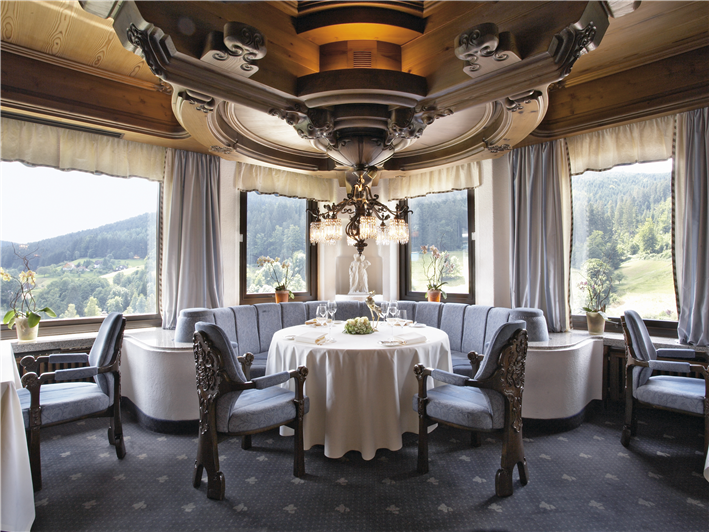
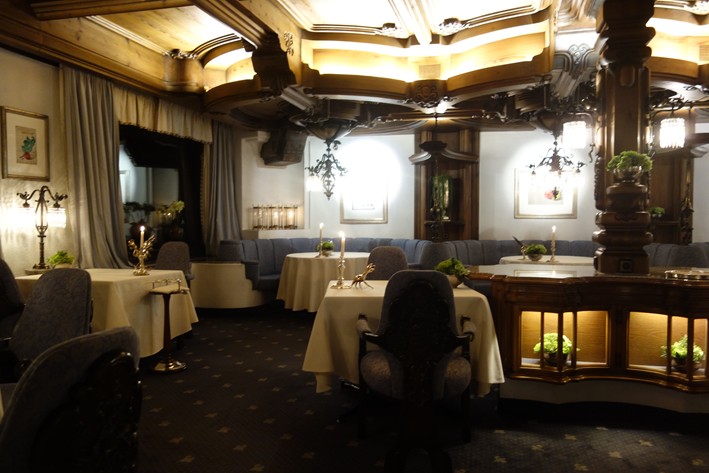
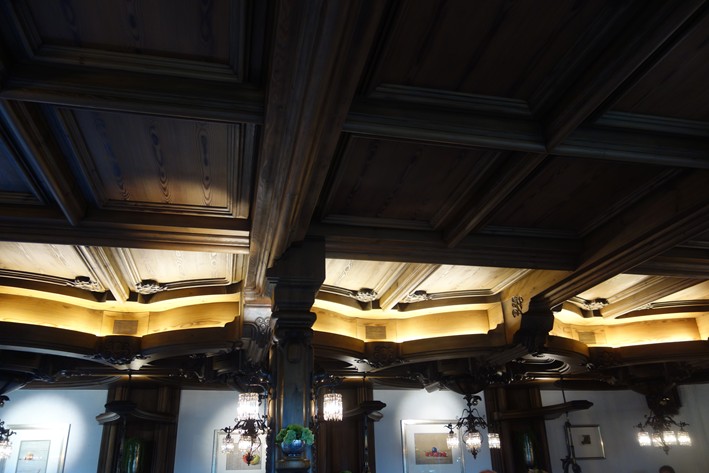
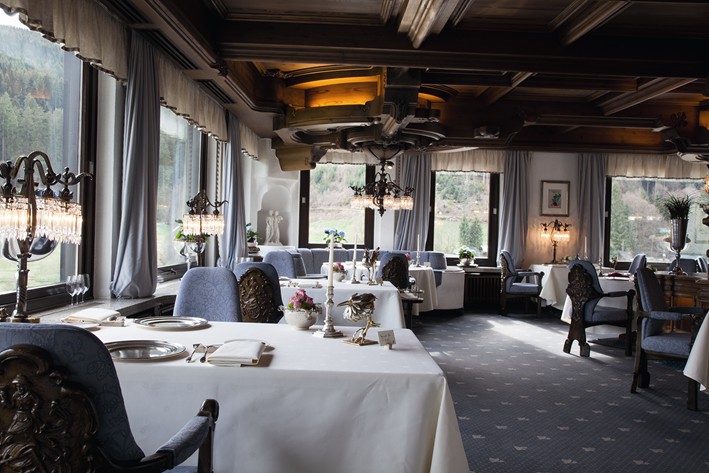
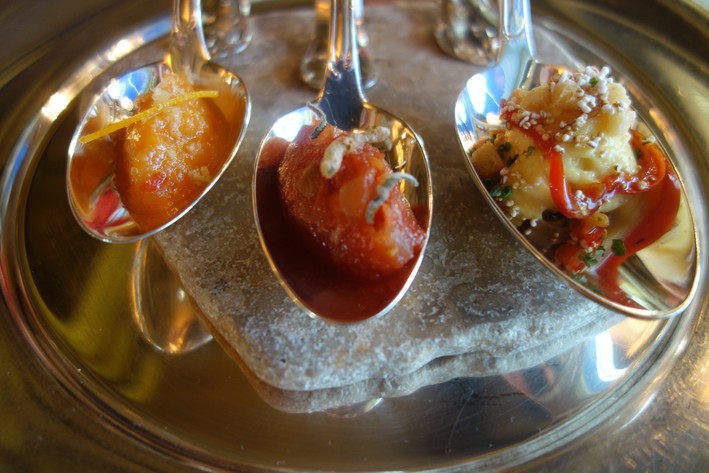
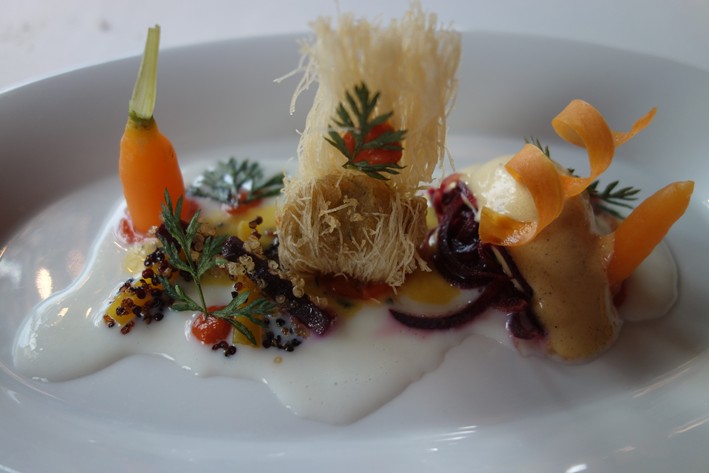
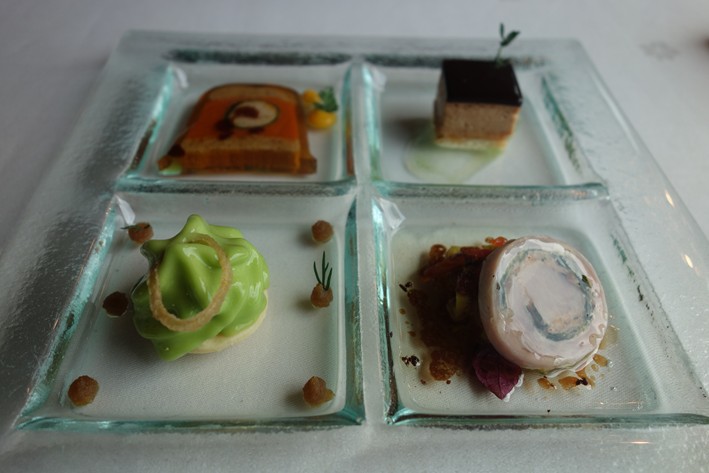


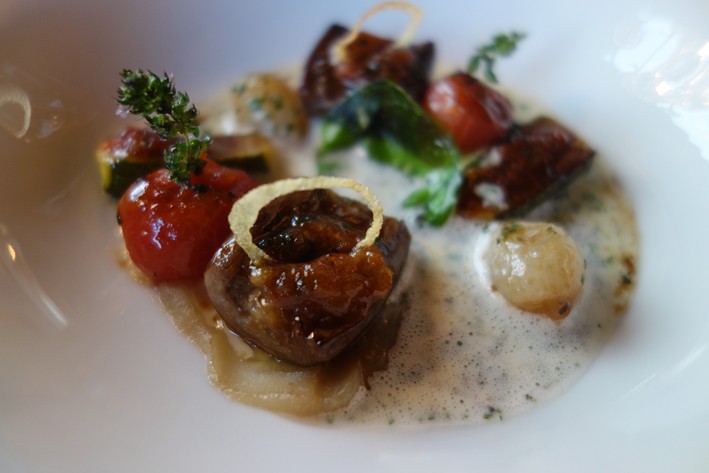
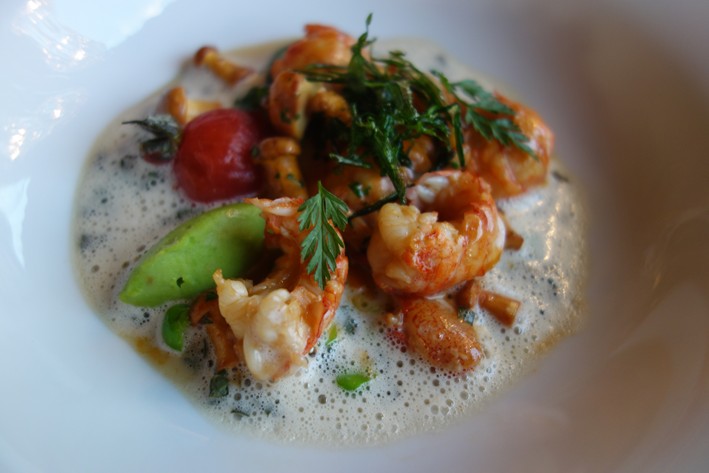

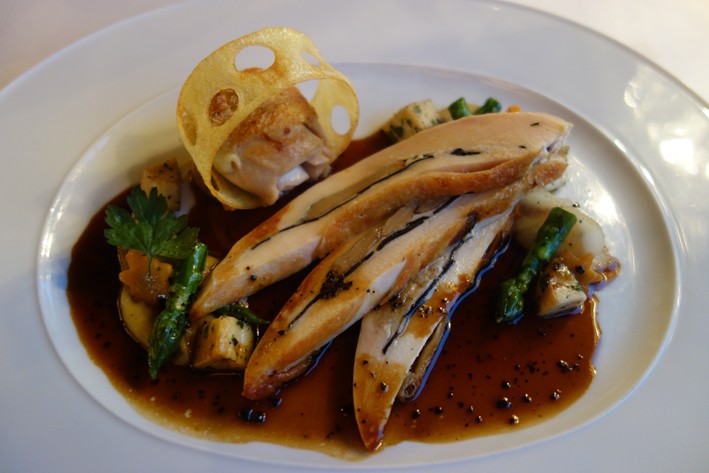

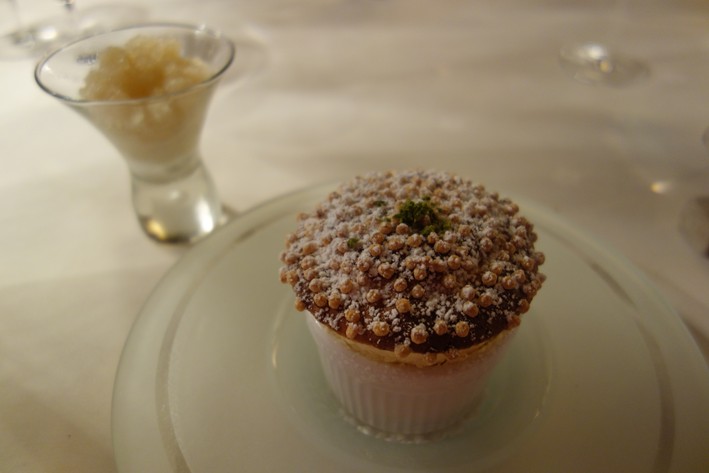
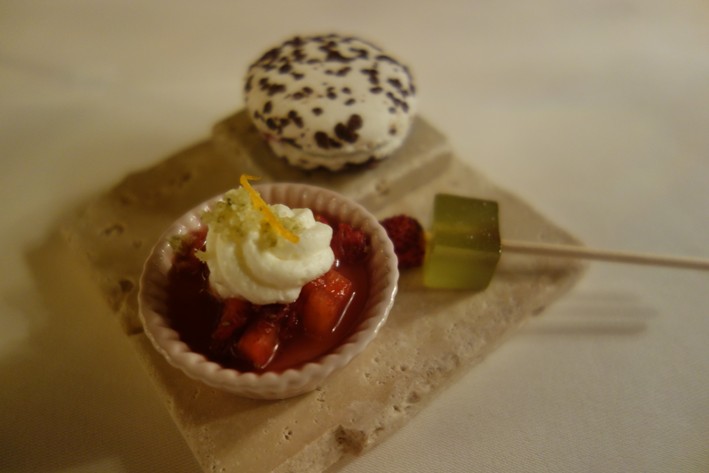
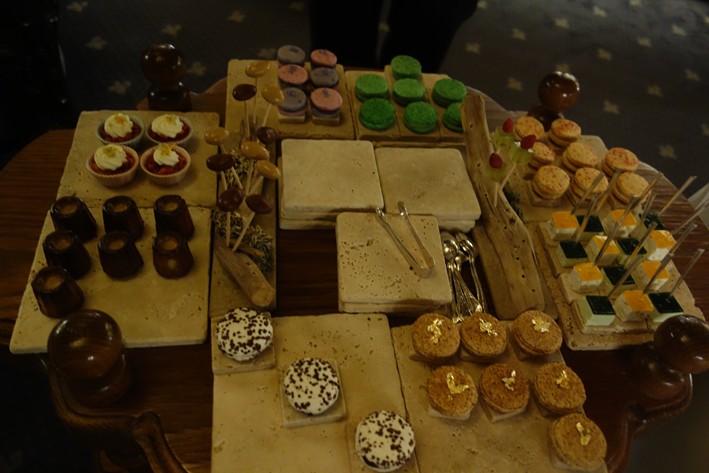


Add a comment
Thank you for submitting your comment, this will be checked and added to the website very soon.
User comments